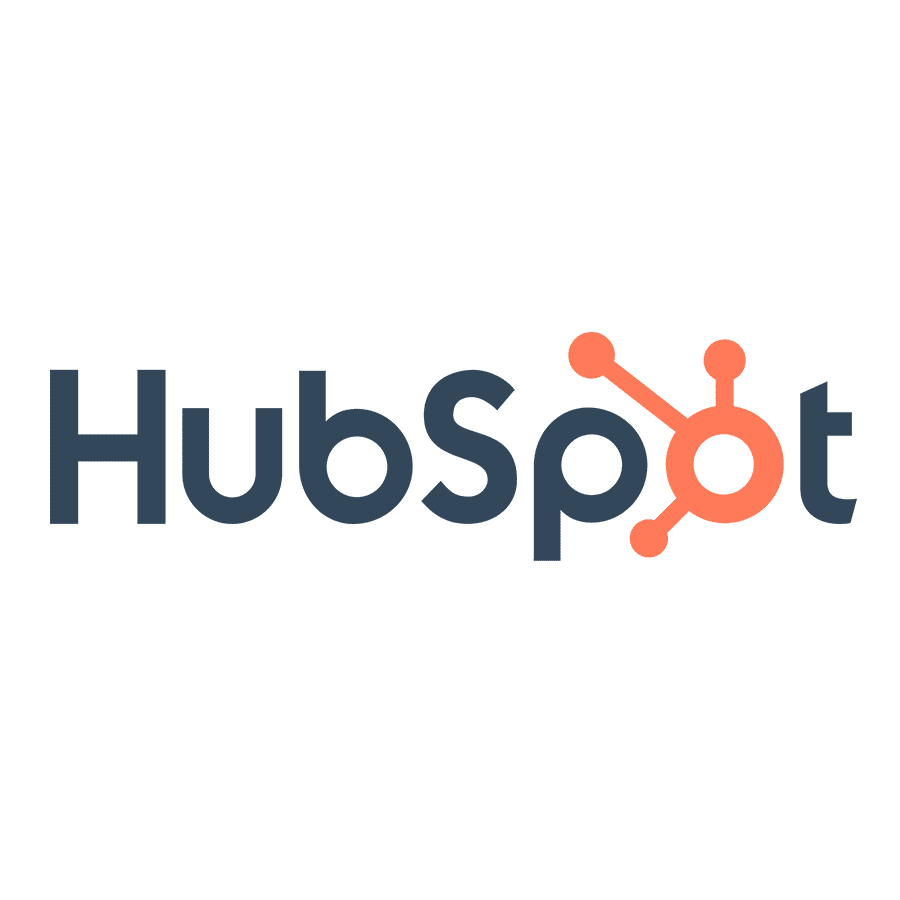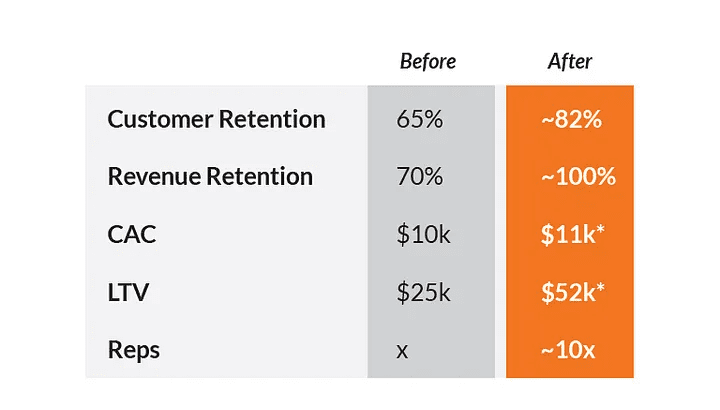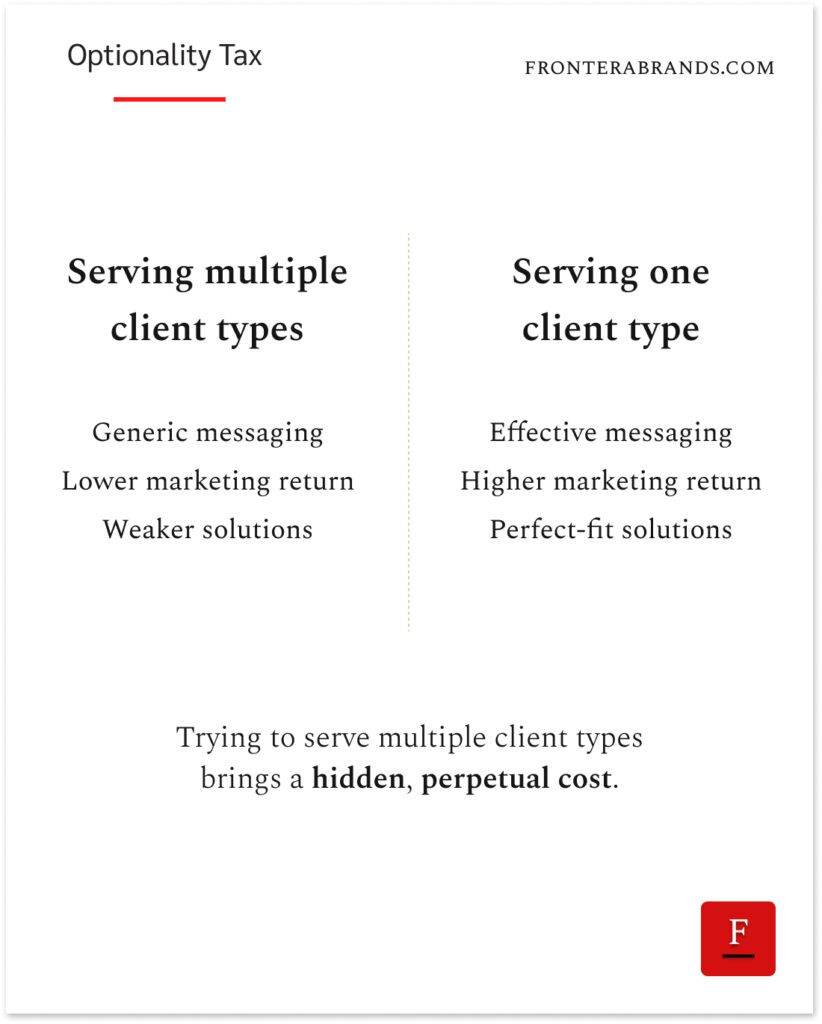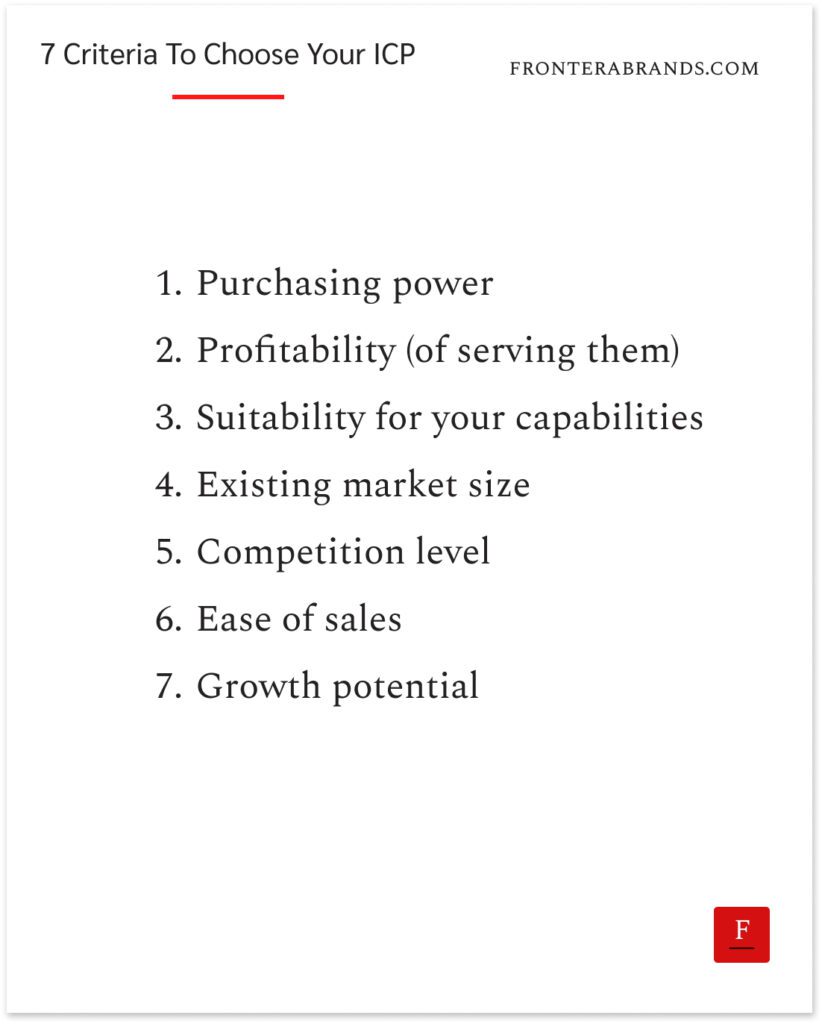In 2012, Hubspot was bleeding customers.
They spent a lot of resources on customer acquisition.
But customers didn’t stick around and churned out after a few months.
So their customer lifetime value was low.
That meant they couldn’t increase marketing budgets further and hire a bigger team to scale.
Hubspot’s executive team realized they had to fix the retention problem or growth would stall forever.
But the question was: how?
They had already tried small improvements to their services here and there to improve retention.
Nothing fixed the issue.
But now, the problem was unbearable.
That’s why they decided to focus all of their employees on finding the underlying issue.
So they could fix it with a new strategy.

Hubspot’s co-founder Brian Halligan tells the story of that period and how their teams had discussions for weeks.
Every discussion ended up with the same topic.
For years, the Hubspot team debated about who their ideal customer profile was.
They had two main customer types.
One was small business owners with up to 10 employees, with no marketing employees.
They called this segment Owner Ollie.
The second group was marketing managers of mid-sized businesses that had 10 to 1000 employees.
They called this customer type Marketer Mary.
One camp at Hubspot believed they had to focus on Owner Ollie.
The other fought for Marketer Mary.
Both sides had valid arguments.
But as all their discussions ended up with the “Who do we serve?” question, the executive team realized one thing.
By not making a clear choice on their ideal customer, Hubspot was paying a big optionality tax.
Their products and services were not sticky.
Because they tried to build solutions for both Owner Ollies and Marketer Marys, perfecting neither.
Their messaging tried to talk to both, but didn’t resonate with any.
After realizing how much that compromise cost them, Hubspot’s executive team made a decision.
They chose Marketer Mary as their ideal customer profile.
They already knew Marketer Mary’s needs.
But now they could focus on making Hubspot’s products and services the perfect solution for them.
Marketer Mary didn’t need tools to bring traffic in like Owner Ollie.
She already had a team of marketers to do that.
She needed Hubspot to convert that traffic better.
So Hubspot team started improving their conversion tools like lead scoring and A/B testing.
Their churn magically started decreasing.
They focused their messaging on Marketer Mary’s problems and how Hubspot solves them.
Their content and ads magically started performing better.
And all that magic showed up in the numbers.

Hubspot’s customer retention rate increased from 65% to 82% in a year.
Their revenue retention rate (which includes upsells and cross-sells) went from 70% to 100%.
So their customer lifetime value doubled.
They did all that while keeping the customer acquisition cost almost the same.
That meant they could spend more on acquiring new customers, because they earned more per customer.
So a single decision on their ideal customer profile allowed Hubspot to become what it is today.
Not choosing an ideal customer profile brings a hidden tax
We’ve talked about why brands need to make sacrifices about who they serve to win.
Hubspot’s story is another proof.
But it’s a tough decision to make for executives.
Because it’s in our nature.
We don’t like limiting our options.
That’s why many B2B executives are afraid to create services for a specific target audience, solving a specific problem.
They don’t want to “let go” of potential customers.
After all, why should they target a smaller piece of the cake?
But sooner or later, they realize that optionality comes with a big tax — a lack of specialization.
This kills their chances of building an exceptional service and attracting their target customers.

The impact of having a clear ideal customer profile for B2B services is clear.
Organizations with a strong ideal customer profile achieve 68% higher account win rates.
It increases conversion rates across the board.
And it drastically increases the return from your marketing.
So the benefits are undeniable.
But the question is, how can you find your ideal client profile?
You probably work with different types of clients.
Even if you wanted to focus on one, how do you know the best one for your business?
Well, here are two steps to make that choice easier:
1. Segment your clients
With the Trigger-to-Outcome Journey, we try to understand what customers are trying to achieve and why.
Here, we are trying to understand who they are as a business.
So you can find patterns and create segments based on them.
To look for potential patterns, make a list of your clients.
Map them with these attributes:
- Industry/Market category
- Departments of your main contacts
- Job titles of your main contacts
- Organizational structure (the departments they have or don’t have related to your service: no in-house IT teams, big sales teams, etc.)
- Number of Employees
- Revenue range
- Growth rate
- Market relationship (B2B, direct-to-consumer, business-to-government, etc.)
- Business model (subscription, wholesale, project-based, etc.)
- Financing (bootstrapped, VC-backed, private equity owned, public, etc.
And two more coming from their Trigger-to-Outcome Journey:
- Buying Triggers (any significant event that occurred before they worked with you: a new CEO appointment, going through an investment round, etc.)
- Problem (are they all trying to solve the same problem when they hire your services, or are there differences?)
After looking at your clients with these attributes, you will see that some of them are not relevant in your case, while some others give you some clusters.
For example, in Hubspot’s case, the industry was irrelevant.
They had clients from many different sectors, hence it didn’t make sense to segment them based on industry.
But for job titles, they had two clear clusters.
So they used job titles to segment their clients — Owner Ollie and Marketer Mary.
Do the same with your clients.
Find which attributes are relevant and create segments based on them.
Don’t go too much into demographics — Marketer Mary’s hobbies or what movies she likes are irrelevant.
What matters is her business context.
2. Find the ideal
Now, let’s say segmentation gives you three main customer types.
And you named them for easy reference.
Great.
But which one should you choose?
It’s an important decision.
Because it will define your positioning.
You’ll shape your services around that customer’s specific problems, message on your solutions for them, and you’ll call them out with your content and ads.
This decision can be overwhelming.
That’s why many founders and executives get stuck here.
They avoid the decision and keep paying a high optionality tax.
They take action only after that tax becomes unbearable, as it happened for Hubspot.
But you don’t need to lose invaluable time and resources.
If you feel stuck trying to make a choice on your ideal client segment, assess them based on the 7 criteria below and give relative ratings for each segment to get closer to the right answer:

- Purchasing power: Which segment has the most purchasing power?
- Profitability: Which segment is the most profitable to serve for your business?
- Suitability for your capabilities: Which segment needs you the most? To which segment do you provide the most value?
- Existing market size: How many companies belong to that segment? Which one is big enough to grow further and small enough to specialize? (You are not rating the largest or smallest here, but the optimal market size)
- Competition level: How many direct competitors do you have for each segment? What’s their capability level compared to yours?
- Ease of sales: How easy is it to close the sales cycle for each segment?
- Growth potential: Which segment is growing the fastest as a whole relative to others?
These factors help you assess your client segments from all angles.
So you can avoid any bias over a single factor.
For example, enterprise customers are dream clients for every B2B brand if you consider only purchasing power and profitability.
After all, who doesn’t want 7-figure contracts?
But they might end up not being the right target segment for you after going through this exercise.
Because they’d score lowest on ease of sales (long sales cycles, endless RFPs, bureaucracy), competition level (giant competitors with endless budgets chase them), and maybe on suitability for your capabilities.
And that’s why even a company like Hubspot didn’t chase enterprise customers to avoid competing against Salesforce.
Ironically, Salesforce did the same when it was a startup.
The moral of the story?
You must have an ideal client profile.
Delaying that decision prevents you from building the best solution, increasing your customer lifetime value, and making your marketing effective.
So first, find certain patterns to segment your clients.
And then assess each segment based on the factors above to choose the right one for you.
Remember.
If you are trying to serve everybody, you are serving nobody.
In crowded markets, specialists win.
–
Enjoyed this article?
Then you’ll love the How Brands Win Newsletter.
Get the “7 Positioning Sins That Cost B2B Brands Millions” guide when you join. It’s free.
